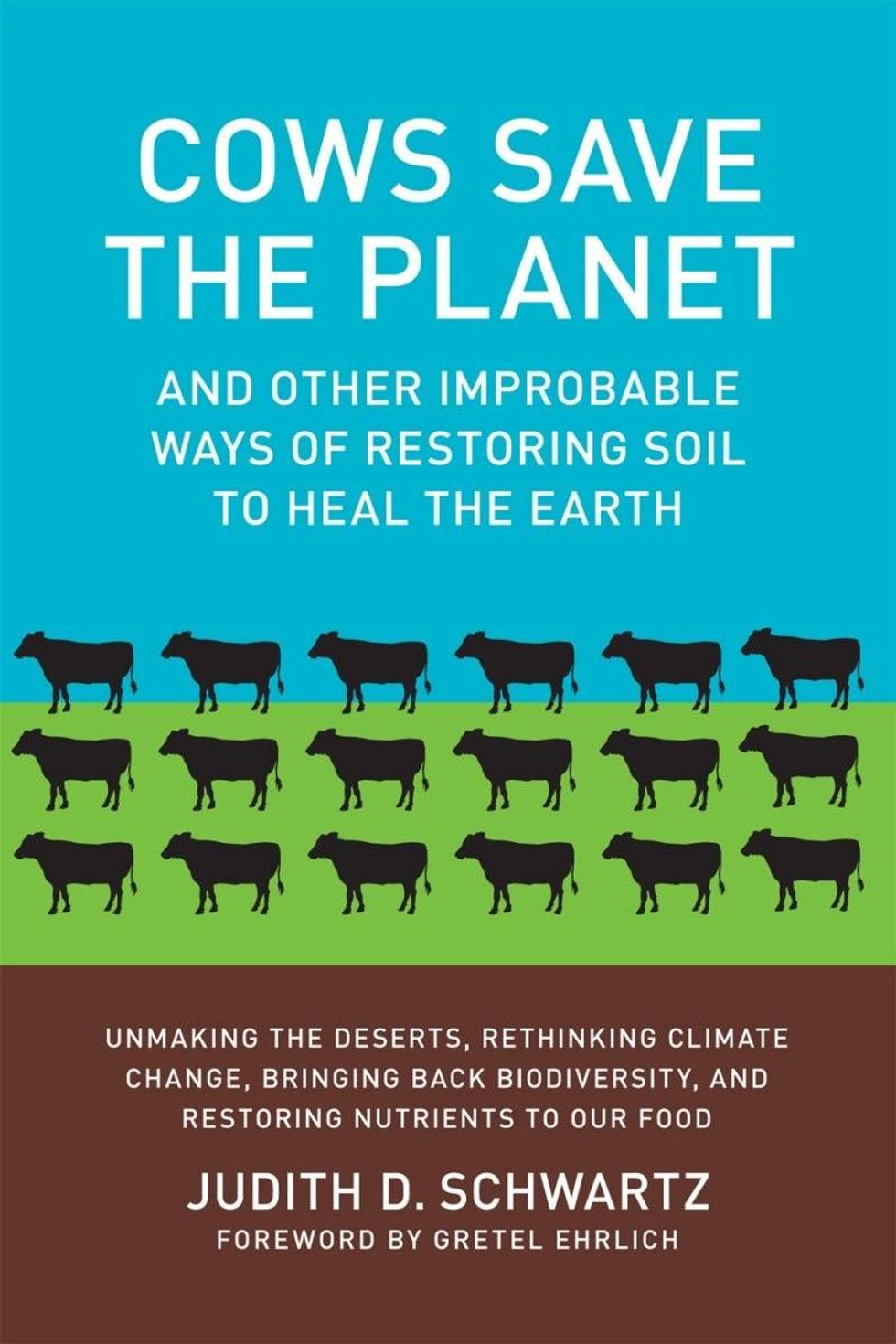Late last week the concentration of carbon dioxide in the atmosphere crossed the 400 parts per million (ppm) threshold. From a climate standpoint this is alarming, and points to the urgency of shifting away from fossil fuels. However, I also feel that our sole emphasis on CO2 blinds us to other means of addressing climate change--notably by returning carbon to where it belongs, in the soil. For this approach represents not only our greatest opportunity to reduce atmospheric CO2 levels, but simultaneously enhances soil fertility and biodiversity, and the land's ability to retain water.
We get the impression that human interference with climate is a sky thing: those greenhouse gases we keep pumping into the air. But it's also a ground phenomenon. The flip-side of rising atmospheric CO2 is the loss of carbon in the soil, the main component of soil organic matter. More carbon is stored in soil than in the atmosphere and plants combined. Over time, more CO2 has entered the atmosphere from soil-disturbing agricultural practices than the burning of fossil fuels. Once we understand this, and encourage land management strategies that store carbon as opposed to promoting its oxidation, things look different. This is cause for optimism because while we can't un-burn fossil fuels (futuristic geoengineering tricks notwithstanding), we can effectively return carbon to the soil.
According to Rattan Lal, Distinguished University Professor at the Ohio State University, who speaks widely on the topic, soil-carbon restoration can potentially store about one billion tons of atmospheric carbon per year. This would offset around 8 to 10 percent of total annual CO2 emissions and one-third of annual enrichment of atmospheric carbon that would otherwise stay in the air. Allan Savory, whose TED 2013 talk on greening deserts and reversing climate change has gone viral, stresses the potential of grassland soils for storing carbon. He says applying Holistic Planned Grazing--a land management framework in which livestock are tools for land restoration--on half the world's grasslands could bring atmospheric carbon dioxide to pre-industrial levels, while feeding people. With estimates of soil carbon losses well into the tens or even hundreds of gigatons, even slightly increasing soil organic carbon would greatly help efforts to mitigate climate change.
Our discussions of CO2 are based on the Keeling Curve, the diagram that presents concentrations in parts-per-million since 1958 and among the most recognizable images in science. When we see the graph and its inexorable climb upward--especially now that it's cracked 400--we can only respond with despair. Where can one find hope, or the wherewithal to fight for change? Climate talks come and go to no avail; even if greenhouse gas emissions hit a full stop, concentrations wouldn't drop down to 350 for nearly a century. However, if we consider our carbon predicament in terms of the carbon cycle, we can work with natural processes to bring it back in balance, primarily through various forms of regenerative agriculture. In the words of Australian soil scientist Christine Jones, "the process that actually removes CO2 from atmospheric circulation is photosynthesis." The reverse of photosynthesis is oxidation (or combustion or respiration), which is what happens when we burn fuel. Or, referring again to soil, when a field is harvested and the land left bare--the carbon in the ground oxidizes. Think of the millions of acres on which we can make a start.
In confronting environmental problems, we're often overwhelmed with a sense of crises competing with each other. There's the terrifying unknown of climate change, the heartbreak of losing plant and animal species, the specter of land around the world drying out. But through the lens of soil carbon, we can see these as manifestations of the same problem: soil depleted of carbon cannot hold water; without moisture, plants and microorganisms can't survive, which limits sources of diversity. But the reverse also holds true, and improving one problem leads to advances in the others. Soil organic matter can absorb many times its weight in water, so an increase in soil carbon means more water held in the soil. Which means happy soil microorganisms and growing plants. Thriving plants mean increased biomass and more carbon drawn from the atmosphere and into the ground. Which increases soil organic matter, which restores nutrient cycling, which broadens the range of organisms, and onward in a positive feedback loop, in alliance with nature's predilection to heal itself.
Cutting emissions is a crucial part of reducing atmospheric CO2 levels. But as we reckon with climate change and other environmental problems, it's time we brought our efforts down to earth. Soil, that humble brown stuff we call dirt, responds readily to restorative measures. Soil carbon, a fulcrum in many biological cycles, offers crucial points of leverage. By focusing only on atmospheric carbon, we're missing an important part of the picture. We're also missing the opportunity to engage the public, push past malaise and hand-wringing, and get our hands dirty--literally--to safeguard our future.


